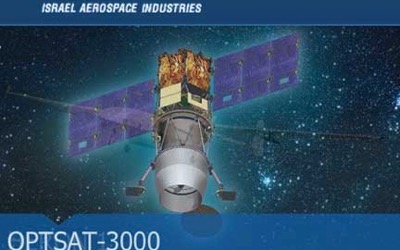
Yesterday the Italian Defense Ministry’s satellite Optsat-3000 was launched in French Guyana, with a Vega rocket from the European Space Agency. What is interesting is that while the rocket was built in Italy (Avio), the actual satellite was made in Israel. The Italians purchased it in 2012, pursuant to a military cooperation agreement between Rome and Tel Aviv. Under this agreement, Alenia Aermacchi (the trading arm of Finmeccanica, now Leonardo) agreed to supply Israel 30 M-346 military planes for advanced training; and Israel Aerospace Industries, for its part, agreed to supply Italy the Optsat-3000 and a state of the art plane: the G550 Caew (see Il Manifesto, 31 July 2012).
Optsat-3000, placed in low orbit (at an altitude of 450 km), is not meant to provide a generic “observation of the Earth” but to supply detailed images of the highest resolution of “any part of the Earth” for military operations in far-off theatres of war. The images that Optsat-3000 gathers arrive in three centres, located in Italy. They are:
• the Inter Forces Centre of GSM satellite of Pratica di Mare (Rome);
• the Inter Forces Centre of management and control Sicral of Vigna di Valle (Rome); and
• the Space Centre of the Fucino of Telespazio (L’Aquila).
In addition to being linked to these three centres, Optsat-3000 is linked to a fourth centre: the Mbt Space Division of the Israel Aerospace Industries, based in Tel Aviv. This confirms that the intention motivating Italian-Israeli military agreement is not simply collaboration between the military industries of two states. There is an ulterior motive at play here: an ever-closer strategic cooperation between the two countries.
Executing this agreement concluded in 2012, the Israeli Aerospace Industries delivered to the Italian Air Force, in December 2016, the first of the two G-550 Caew airplanes. These planes are of the model Gulfstream 550 - a luxury jet for executives, made in U.S.A., that the Israel Aerospace Industries is transforming into highly sophisticated war planes. Equipped with state-of-the-art radar systems, espionage systems and communications systems, all complying with NATO standards, these planes are the launching pad for a system of command and control for attack in far-off theatres, where the props laid out for war.
Moving to an economic analysis of state conduct, the above evidences that there is no such thing as a free lunch. What has Italy paid for Optsat? Just 182 million dollars plus the astronomical costs for putting it in orbit plus the costs of managing a satellite (the orbit life of which is forecast at around 7 years). The two Caew G-550 planes, with their relative command and control centres, cost around 800 million dollars. The total cost therefore comes to more than a billion dollars. Each of these billion dollars is money on trust for the public. The billion dollars, Italy’s payment for selling Israel 30 M-346 training planes, flows into the coffers of Leonardo S.p.A, which is as mentioned earlier, the new trading name of Finmeccanica, a company that the Treasury has a 30% shareholding in.
So this is how the White Book for International Security and Defense is translated into action. A book signed by Minister Pinotti, transformed only last February into a draft law that delegates to the government “revising the operative model of the Armed Forces”.
A model in which the military industry assumes the role of the “pillar of the Country System” in which the Armed Forces have been given the duty to defend “the vital interests of the Country” intervening in areas looking onto the Mediterranean – North Africa, the Middle East, the Balkans, – and, outside such areas, in Afghanistan and wherever in the world are at stake the interests of the West represented fundamentally by a Nato, that the US alone has the licence to drive.
The purchase of military systems such as the Optsat Spy satellite and the G-550 Caew planes leaves no room for doubting that the path being trodden, tears down along its way, the constitutional pillars on which the Italian Republic is founded. And there is no light at the end of this tunnelled vision, only war.

 Articles by this author
Articles by this author Send a message
Send a message





















Stay In Touch
Follow us on social networks
Subscribe to weekly newsletter